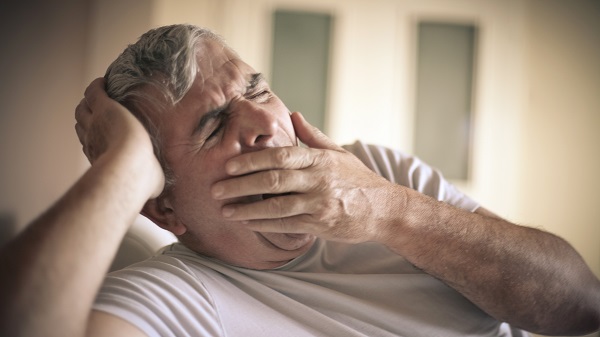How AI software will track snoring’s silent killer
When it comes to wake-up calls, they don’t come much bigger than the time Dr Nadi Sadr’s father fell asleep behind the wheel.
Luckily for him – not to mention those around him – Sadr’s father had stopped at a red light before nodding off. He lost his licence and was diagnosed with sleep apnoea: a sleeping disorder where a person’s narrow airways cause their breathing to stop and start, sometimes hundreds of times a night. Common symptoms include loud snoring, choking and gasping for air.
But the potential disaster also inspired Sadr, now a biomedical engineer at the University of Sydney’s Charles Perkins Centre and School of Biomedical Engineering, to find better ways to diagnose the disorder and get treatment for those who need it.

“Even though up to 15 per cent of the population is thought to have sleep apnoea, around 80 to 90 per cent of those aren’t diagnosed,” Sadr says.
And now, after completing the 2019 NSW Medical Device Commercialisation Training Program (MDCTP) – a 12-week business-building courses and workshop series focusing on clinical trials, regulatory strategy and intellectual property – Sadr is developing software called SleepCardio. It can diagnose sleep apnoea with fewer, and more comfortable, sensors and it will also predict a person’s risk of cardiovascular disease, which often accompanies the condition; Sadr calls it sleep apnoea’s “silent killer”.
Sadr has worked in sleep apnoea research since starting her PhD in 2014, but the MDCTP was her first foray into the unfamiliar world of commercialisation. At first, she wasn’t sure how the program would help her.
“As a researcher, I’ve won presentation awards and thought, ‘OK, I’m good at interacting’, and I’ve applied for grants so I can attract investors,” Sadr says.
“But during the program, I learnt it’s all completely different in business.”
A valuable skill Sadr developed from the MDCTP was how to interview people to gain new insights or ideas – not to confirm what she already knew.
By using this technique, she changed her technology several times to better suit her stakeholders. For instance, the most precise clinical diagnostic method for sleep apnoea involves hooking a person up to a suite of sensors and a tangle of wires – such as electrodes to measure heart rate and an airflow sensor on the top lip – then monitoring them overnight in a sleep clinic.
But this can be invasive and uncomfortable.
So Sadr initially focused on reliably and accurately diagnosing sleep apnoea using off-the-shelf sensors – the fewer, the better.
After speaking with potential customers, their family, friends, sleep clinicians and technicians, Sadr realised that the answer didn’t depend solely on the number of sensors, but also the type.
“I started with two sensors, then switched to smartwatches – but then I pivoted again and switched back because I found out that if I want high accuracy, I need to have a better sensor than a smartwatch.”
The final move was to develop software that links cardiovascular disease to sleep apnoea diagnostic data. The software – SleepCardio – uses machine learning to detect patterns in heart rate, breathing and blood oxygen levels that indicate risk. She is currently at the proof-of-concept stage.
Even though the MDCTP is formally over, it has transformed the way Sadr approaches all aspects of her life.
“I used to tell everyone that I’m not into business – I’m just a pure researcher,” she says.
“But now I only think in a business mindset. As much as it sounds dramatic, it changed me because I never had the courage to take risks until now.”
By Bel Smith
Updated 5 years ago